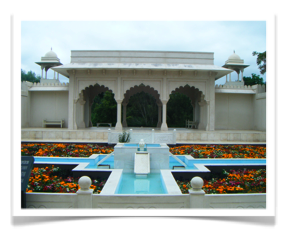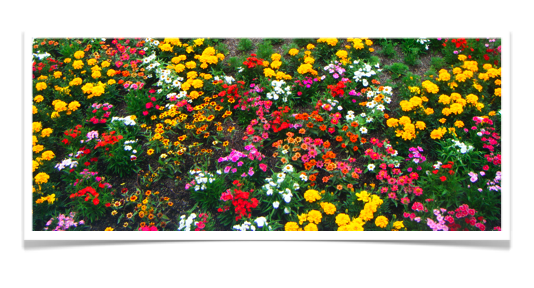 If you’re missing all the sporting action of the Commonwealth Games held last month in India, then why not consider reminiscing with an Indian inspired garden. Char bagh gardens, or paradise gardens as they are sometimes known, are some of the oldest garden designs with references to them dating back to 6000 BC in the Middle East, Mesopotamia, Persia and Egypt. Later they appeared in Jewish, Christian and Islamic literature. This picture is a typical Indian themed garden that I saw last year. You can easily take ideas from it and work them into your own garden at home. Start with a backdrop of ornate archways and columns.
If you’re missing all the sporting action of the Commonwealth Games held last month in India, then why not consider reminiscing with an Indian inspired garden. Char bagh gardens, or paradise gardens as they are sometimes known, are some of the oldest garden designs with references to them dating back to 6000 BC in the Middle East, Mesopotamia, Persia and Egypt. Later they appeared in Jewish, Christian and Islamic literature. This picture is a typical Indian themed garden that I saw last year. You can easily take ideas from it and work them into your own garden at home. Start with a backdrop of ornate archways and columns.
Putting in a gazebo in this style instantly sets the scene, with a cool shaded retreat for you to sit in the garden. A similar effect to my photo could be created on a rendered back wall or boundary fence with columns and landscape mural painted between the arches using trompe l’oeil style to create the illusion of gardens beyond.
Next look at an elaborate water feature. Indian gardens always feature the cooling element of water and usually have this in a cross formation, dividing the garden into 4 sections. A central fountain typically gives focus to this feature. The 4 sections often represent the 4 rivers in the Garden of Eden, from which the symbolism is derived.
Then simply fill in the gaps with an array of colourful plants. This garden used annual plants representing the bright colours and flavours of India and all it’s delicious spices. Use French marigold (Tagetes sp.) in orange and yellow, Dianthus sp. in reds, whites and crimson to create a rich tapestry of colour.

Two types of plants are also often used in a paradise garden: a Cypress to represent death and fruit trees to represent life. But if you’re into the culture and food of India like me, then don’t forget to include some saffron bulbs, a potted curry plant and a curry tree so you can use the leaves when you make your next curry!




 Twitter
Twitter Facebook
Facebook